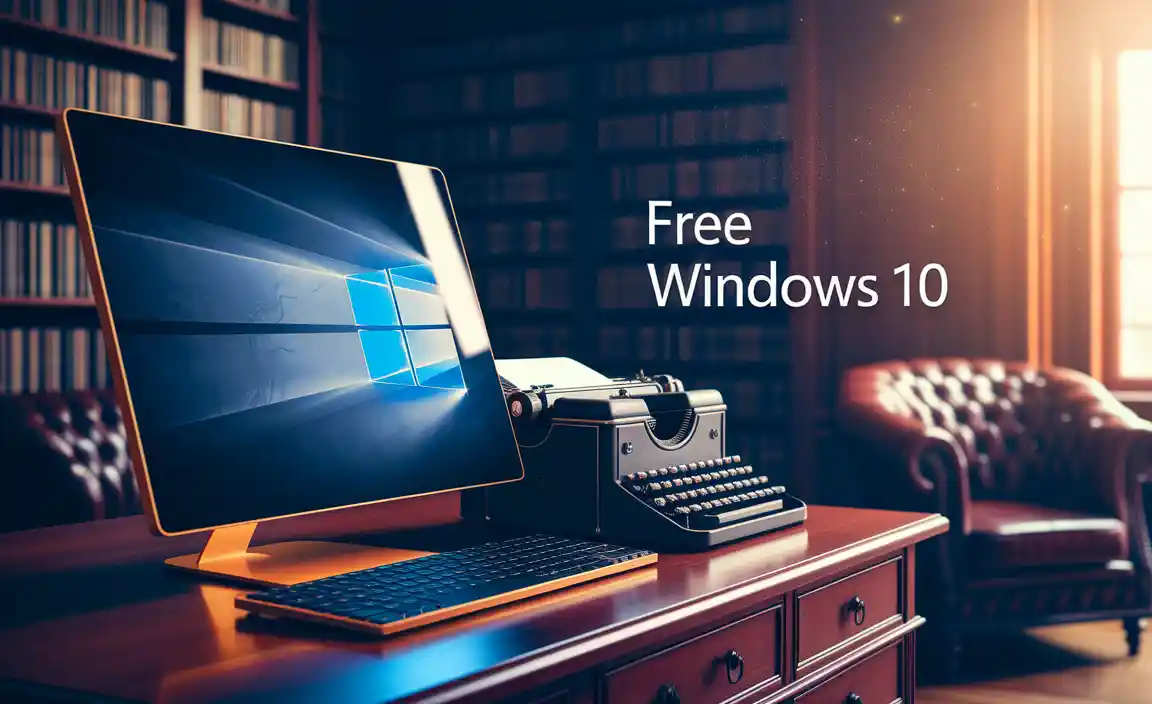Will I Get Windows 10 For Free? Get Yours Now!
The promise of a free operating system upgrade is an undeniably attractive proposition, especially when dealing with a foundational piece of software like Windows. For many, questions like “will I get Windows 10 for free?” have lingered, bringing with them a mix of hope and uncertainty. Fortunately, for a significant period following its initial release, Microsoft did indeed offer a free upgrade path to Windows 10 for eligible users of Windows 7 and Windows 8.1. While the official free upgrade program has since concluded, understanding its history and the circumstances under which it was available sheds light on why this question still resonates and what options might exist (or have existed) for obtaining Windows 10 without direct purchase.

The initial free upgrade offer for Windows 10 was a strategic move by Microsoft. Launched in July 2015, it was designed to accelerate the adoption of their newest operating system, encourage a more unified user base, and leverage the security and feature enhancements that Windows 10 offered over its predecessors. This program was initially slated to end in July 2016, but Microsoft, in a somewhat unconventional move, extended it. This extension period meant that even past the official deadline, many users continued to upgrade successfully. The primary eligibility criteria were straightforward: users needed to have a genuine, activated version of Windows 7 Service Pack 1 (SP1) or Windows 8.1. If your system met these requirements, you were generally able to secure your free Windows 10 license.
Understanding the Free Upgrade Program’s Legacy
When the question “will I get Windows 10 for free?” first arose for individuals, the answer was often a resounding yes, provided they met the outlined conditions. This was a significant departure from previous Windows versions, where upgrades were typically paid. The incentive was substantial, offering access to features like the revamped Start Menu, Cortana, Microsoft Edge browser, and improved security measures without an upfront cost. For businesses and home users alike, this presented a compelling reason to transition. The ease of the upgrade process, often facilitated through Windows Update, made it accessible even for those less technically inclined. The activation was tied to the hardware of the machine, meaning once Windows 10 was activated on a device, it was considered a full, licensed copy for that hardware.
Beyond the Official Offer: Other Avenues for Free Windows 10
While the primary free upgrade program has officially ended, the question of “will I get Windows 10 for free?” might still be relevant for those who missed the initial window or are acquiring older hardware. Microsoft’s generosity didn’t entirely disappear overnight. For a surprisingly long time, the activation servers continued to accept upgrade paths from Windows 7 and 8.1, essentially allowing users to perform a clean install or in-place upgrade using a Windows 10 media creation tool and activate it with their old Windows 7/8.1 product keys. This unofficial loophole, though no longer explicitly advertised or supported as a formal program, has been a method for some to obtain Windows 10. However, relying on such methods carries inherent risks and is not officially sanctioned by Microsoft.
It’s crucial to understand that the “free” aspect of these upgrades was contingent on owning a legitimate license of a previous Windows version. It wasn’t a giveaway of new licenses to anyone and everyone. If your Windows 7 or 8.1 installation was not genuine, you would not have qualified for the free upgrade. Furthermore, Microsoft’s terms and conditions can and do change. What might have worked or been tolerated in the past may not be the case moving forward. Therefore, while some users might still find success with the older methods, official channels for obtaining a free Windows 10 license are no longer active.
What If I Don’t Qualify? Purchasing a Windows 10 License
For those who cannot qualify for a free upgrade or are looking to install Windows 10 on a new machine without a pre-existing eligible license, purchasing a copy is the standard and legitimate route. Windows 10 Home and Pro licenses are available through Microsoft’s website and various authorized retailers. While the initial free upgrade was a huge draw, the cost of a Windows 10 license is a one-time investment that grants you full access to the operating system’s functionalities and ongoing security updates.
Given that Windows 11 is now the latest iteration of the Windows operating system, the availability and focus on Windows 10 are shifting. While Windows 10 will continue to receive security updates until October 14, 2025, Microsoft’s primary push is towards Windows 11. Therefore, any consideration of obtaining Windows 10 now should also factor in the future development and support lifecycle of both operating systems. For users still on older operating systems like Windows 7 or 8, a paid upgrade to either Windows 10 (if compatible) or directly to Windows 11 (if hardware permits) is the officially supported path.
In conclusion, the question “will I get Windows 10 for free?” often leads back to the legacy of a very successful but time-limited promotional offer. While the direct, official free upgrade path has concluded, understanding its history provides valuable context. For individuals seeking a genuine Windows 10 license today, purchasing a valid copy remains the most reliable and recommended method.
